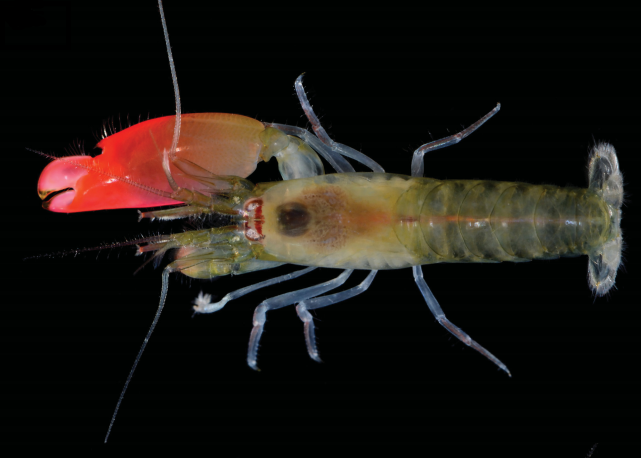Glowing pink shrimp species capable of killing with sonic energy named after Pink Floyd
The band have a reputation for playing at extremely loud volumes.

Meet Synalpheus pinkfloydi – the crustacean that has been named after one of the rock and roll's most popular bands. A team of researchers discovered a strikingly bright pink-clawed species of pistol shrimp off the Pacific coast of Panama and decided to name it after the famous English psychedelic group Pink Floyd.
The discovery was published in Biotaxa's 12 April issue, and the creature was named after the team's favourite musicians. "I often play Pink Floyd as background music while I'm working, but now the band and my work have been happily combined in the scientific literature," lead author Arthur Anker of the Federal University of Ceará, Brazil, said.

Study co-author Sammy De Grave, head of research at Oxford University Museum of National History, also explained that he has been a fan of the band since The Wall was released in 1979, when he was 14 years old.
"I've seen them play live several times since, including the Hyde Park reunion gig for Live8 in 2005. The description of this new species of pistol shrimp was the perfect opportunity to finally give a nod to my favourite band," he said in the university's blog More Than A Dodo.
Its hue is not the only connection between the iconic British band Pink Floyd and its namesake. The Synalpheus pinkfloydi is a member of the pistol or snapping shrimp species that can generate sonic energy powerful enough to stun or kill its prey. The shrimp's ability to produce one of the loudest sounds in the ocean comes from its enlarged claw. The shrimp closes its claw at a rapid speed, creating a high-pressure cavitation bubble. The bubble's explosion creates the sound, which can reach up to 210 decibels.
The band have a reputation for playing at extremely loud volumes – a tradition that led to a rumour that the noise killed all the fish in a nearby pond. While the story turned out to be false, and the fish died from smoke flares that were set off underwater, the comparison with the shrimp still holds strong.
These famously named pistol shrimp are closely-related to the Synalpheus antillensis, which were first studied in 1909 after being discovered in the western Atlantic, including the Caribbean side of Panama. But the authors of the new paper have pointed out that the sister-species, while similar looking, show considerable genetic divergence.
Following news of the naming, Life Collections Manager at Oxford University Museum of Natural History, Mark Carnall designed a collection of Pink Floyd album covers re-imagined with the shrimp, as did museum educator Chris Jarvis and Kate Pocklington.
Synalpheus pinkfloydi inspired album covers reimagined by @mark_carnall to celebrate description of new species published today @Zootaxa pic.twitter.com/9yLFlbPwAE
— MuseumNaturalHistory (@morethanadodo) April 12, 2017
© Copyright IBTimes 2025. All rights reserved.






















